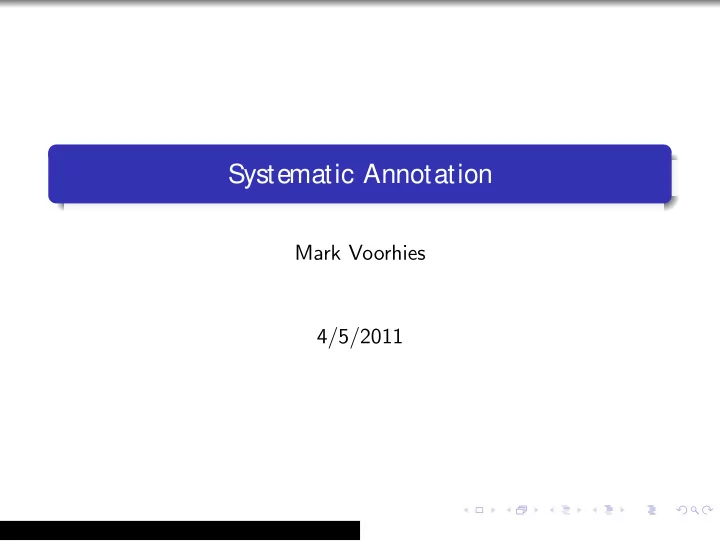

Systematic Annotation Mark Voorhies 4/5/2011
The Gene Ontology Three directed acyclic graphs (aspects): Biological Process Molecular Function Subcellular Component
The Gene Ontology
The Gene Ontology
The AmiGO browser
The Gene Ontology
Associating GO terms How might we annotate genes with GO terms?
Associating GO terms How might we annotate genes with GO terms? By sequence homology ( e.g. , BLAST) By domain homology ( e.g. , InterProScan) Mapping from an annotated relative ( e.g. , INPARANOID) Human curation of the literature ( e.g. , SGD)
Associating GO terms: Evidence codes Experimental
The Gene Ontology How might we annotate genes with GO terms? How do we calculate the significance of the GO terms associated with a particular group of genes?
Sampling with replacement: Mutagenesis How many transformants do we have to screen in order to “cover” a genome?
Sampling with replacement: Mutagenesis How many transformants do we have to screen in order to “cover” a genome? Probability that a transformant has (1) disrupted gene: p m Number of genes in organsim: N g
Sampling with replacement: Mutagenesis How many transformants do we have to screen in order to “cover” a genome? Probability that a transformant has (1) disrupted gene: p m Number of genes in organsim: N g Probability that a specific gene is disrupted in a specific transformant: � 1 � = p m p d = p m (1) N g N g
Sampling with replacement: Mutagenesis How many transformants do we have to screen in order to “cover” a genome? Probability that a transformant has (1) disrupted gene: p m Number of genes in organsim: N g Probability that a specific gene is disrupted in a specific transformant: � 1 � = p m p d = p m (1) N g N g Probability of not disrupting that gene: p u = 1 − p m (2) N g
Sampling with replacement: Mutagenesis Probability of not disrupting that gene: p u = 1 − p m (3) N g
Sampling with replacement: Mutagenesis Probability of not disrupting that gene: p u = 1 − p m (3) N g The probability of not disrupting that gene n independent times is: � n � 1 − p m p u , n = (4) N g
Sampling with replacement: Mutagenesis Probability of not disrupting that gene: p u = 1 − p m (3) N g The probability of not disrupting that gene n independent times is: � n � 1 − p m p u , n = (4) N g And the probability of disrupting that gene n independent times is: � n � 1 − p m p d , n = 1 − p u , n = 1 − (5) N g
Sampling with replacement: Mutagenesis Probability of not disrupting that gene: p u = 1 − p m (3) N g The probability of not disrupting that gene n independent times is: � n � 1 − p m p u , n = (4) N g And the probability of disrupting that gene n independent times is: � n � 1 − p m p d , n = 1 − p u , n = 1 − (5) N g This is also the expected genome coverage.
Sampling with replacement: General Cases Calculating the probability of zero events was easy. p
Sampling with replacement: General Cases Calculating the probability of zero events was easy. p
Sampling with replacement: General Cases Calculating the probability of zero events was easy. p
Recommend
More recommend